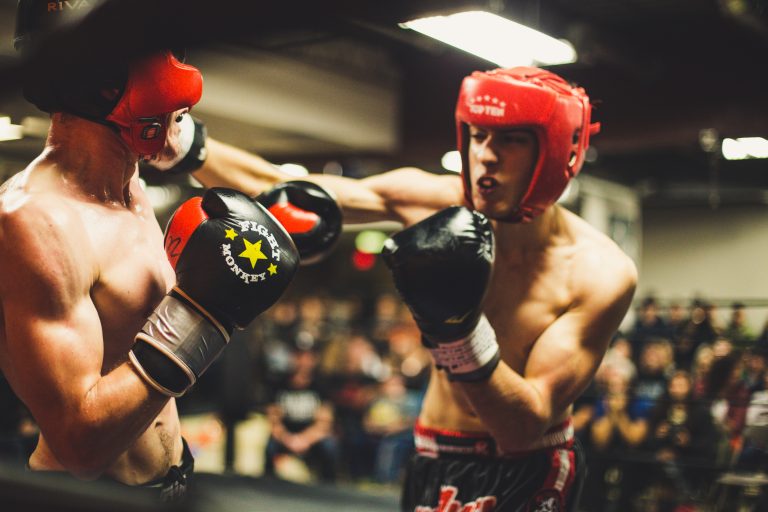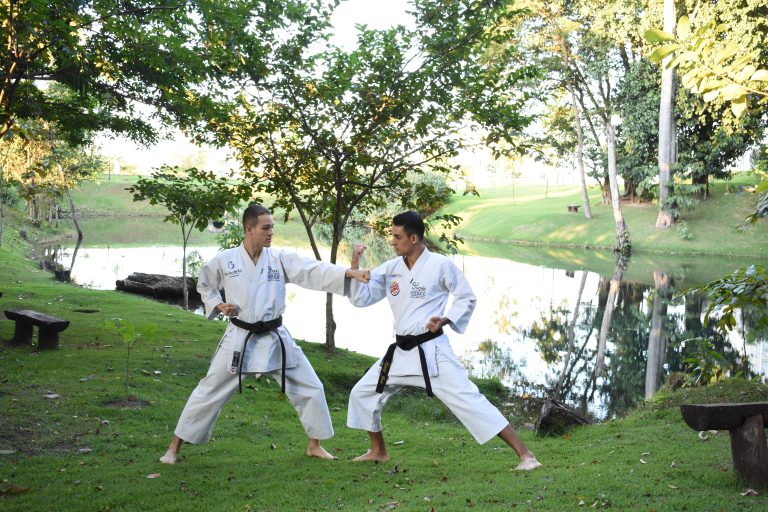How to Learn Karate for Beginners at Home
Karate is a form of martial art that originated in the Ryukyu Kingdom in Japan. It is a well-rounded discipline that can improve your physical and mental strength. Practicing karate at home is a great way to start learning the basics before taking classes in a dojo. In this blog post, we will guide you on how to learn karate at home for beginners.
Benefits of Learning Karate
Before we dive into the details of karate, let’s first discuss the benefits of practicing this martial art.
Physical Fitness
Karate involves a lot of movements that can improve your overall physical fitness. It can help you build strength, agility, flexibility, coordination, and balance. Regular practice can also help you lose weight and tone your muscles.
Mental Toughness
Karate builds mental toughness through its focus on discipline, self-control, and perseverance. It can help you develop a strong willpower that can be beneficial in other areas of your life.
Self-Defense
Karate is an effective self-defense technique. It trains you to react quickly and defend yourself against attackers.
How to Learn Karate at Home for Beginners
Now that we’ve covered the benefits of learning karate let’s get into the details of how to start practicing karate at home.
1. Research and Plan
Before you start practicing karate at home, do your research on the basics of karate. There are many resources available that can help you learn about the basic movements, stances, and strikes. Watch videos, read books and articles, and take notes on what you’ve learned.
After doing your research, create a plan that includes a schedule for practicing karate at home. Start with 10-15 minute sessions and gradually increase the duration and intensity of your practice.
2. Find a Suitable Space
Make sure you have a suitable space for practicing karate at home. Choose an area that is spacious, well-ventilated, and free from obstacles. A wooden floor is ideal, but you can also use a mat or carpet.
3. Warm-Up and Stretch
Warming up and stretching before practicing karate is essential to prevent injuries. You can start with basic warm-up exercises like jogging in place, jumping jacks, and lunges. Then move onto stretching exercises like hamstring stretches, shoulder stretches, and neck rotations.
4. Practice Basic Moves
Start practicing basic karate moves like punches, kicks, and blocks. Practice these moves in front of a mirror so you can correct your form and technique.
5. Follow a Training Program
There are many training programs available online that can guide you on how to learn karate at home for beginners. Choose a program that suits your skill level, fitness level, and schedule.
6. Find a Training Partner
Training with a partner can make your practice more enjoyable and effective. Look for a friend or family member who is interested in learning karate with you.
7. Join a Karate Dojo
Joining a karate dojo is the next step in your karate journey. In a dojo, you will have access to professional instructors who can guide you on proper form, technique, and advanced moves.
How to Learn Karate for Beginners at Home: Frequently Asked Questions
Karate is a popular martial art that originated in Okinawa, Japan, and has become a global phenomenon. Learning karate is not only a great way to stay physically fit but also to build confidence, discipline, and self-defense skills. If you’re a beginner and want to learn karate at home, there are a few things you need to know. In this blog post, we’ve compiled a list of the most frequently asked questions about how to learn karate for beginners at home.
1. Can You Really Learn Karate at Home?
Yes, you can learn karate at home, but there are limitations. Learning from a qualified instructor in a traditional dojo is the best way to learn karate. However, if attending classes in person is not an option, online karate courses, instructional DVDs, and books can help you get started. The most important thing is to stay motivated, focused, and disciplined.
2. How Do You Start Learning Karate at Home?
To start learning karate at home, you need to:
- Find a suitable space: You need enough space to practice karate movements and techniques, such as a workout room or garage.
- Get the right gear: It’s essential to have proper gear, such as a karate gi (uniform), a belt, and protective gear (e.g., mouthguard, groin cup).
- Choose a learning method: Choose a learning method that works best for you, such as online courses, instructional DVDs, or books.
- Set goals: Decide what you want to achieve and set achievable goals, such as learning basic karate movements or passing a belt test.
3. What Are the Basic Karate Movements?
The basic karate movements involve stances, strikes, kicks, and blocks. Some of the most common movements include:
- Stances: The most common stances are the front stance, back stance, and horse stance.
- Strikes: The most common strikes are the straight punch, uppercut, and knife-hand strike.
- Kicks: The most common kicks are the front kick, side kick, and roundhouse kick.
- Blocks: The most common blocks are the inward block, outward block, and downward block.
4. How Long Does It Take to Learn Karate?
Learning karate is a lifelong journey that involves continuous learning and improvement. The time it takes to learn karate depends on many factors, such as your age, fitness level, dedication, and natural abilities. Generally, it takes at least three to four years to earn a black belt in karate. However, you can start seeing positive results within a few weeks or months of consistent practice.
5. How Do You Stay Motivated When Learning Karate at Home?
Staying motivated when learning karate at home can be challenging, especially if you’re learning alone. Here are some tips to help you stay motivated:
- Set achievable goals: Break down your learning into small, achievable goals, such as learning a new technique every week or working out for a certain number of hours each day.
- Track your progress: Use a journal or app to track your progress and celebrate small victories.
- Find a training partner: If possible, find a training partner who shares your passion for karate and can practice with you regularly.
- Join online communities: Join online karate communities, such as forums or social media groups, to connect with other learners and instructors.
- Stay disciplined: Make karate practice a part of your daily routine and stay disciplined, even when you don’t feel like it.
6. Is It Safe to Practice Karate at Home?
Practicing karate at home can be safe if you take the necessary precautions. Here are some tips to ensure your safety:
- Warm-up properly: Always warm up before practicing karate to prevent injuries.
- Start slowly: Start with basic movements and gradually progress to more advanced techniques.
- Use proper gear: Always wear proper gear, such as a karate gi, belt, and protective gear.
- Practice in a safe environment: Make sure your practice area is free from obstacles and hazards.
- Get feedback: If possible, ask a qualified instructor to review your techniques and provide feedback.
The Bottom Line
Learning karate at home can be a rewarding experience, but it requires discipline, dedication, and patience. Although online courses, DVDs, and books can help you get started, it’s crucial to find a qualified instructor and attend classes in a traditional dojo to learn from a direct source. Remember to stay motivated, set achievable goals, and practice regularly to achieve your karate goals.
How to Learn Karate for Beginners at Home: A Step-by-Step Guide
Karate is an ancient fighting form that teaches self-defense, physical fitness, and mental discipline. Many people often think that karate can only be learned in a dojo or with the help of an instructor. However, with the right guidance, you can learn karate at home. This guide will give you a step-by-step breakdown of how to learn karate for beginners at home.
1. Setting-Up Your Space
It is important to set up a dedicated space for your home karate practice. Ideally, you should have around 6 feet by 6 feet of space to move around comfortably. Make sure that the space is free from any obstacles that can cause an injury. Also, ensure that there is enough ventilation to keep you cool and help you breathe.
2. Warm-Up and Stretch
Warming up and stretching is essential before starting any karate practice. A good warm-up helps to prepare your body for karate training and reduces the risk of injury. Freestyle jumping, push-ups, and jogging for a few minutes are great warm-up exercises. Stretches such as leg and arm stretches are also important to prepare your muscles for practice.
3. Learning Basic Karate Techniques
There are several basic karate techniques that every beginner should learn. These include:
- Punching: The two most common punches in karate are the straight punch and the uppercut.
- Kicking: Kicks involve striking with the feet, and the most common kicks in karate are front kicks, side kicks, and roundhouse kicks.
- Blocking: Blocks are used to defend against an attack. Some common blocks in karate include the high block, low block, and middle block.
It is important to learn these techniques correctly from the onset to avoid forming bad habits that could cause injury later on. You could find video tutorials, follow online karate courses, or work with an experienced partner.
4. Practicing Karate Drills
After learning some basic techniques, you can start practicing karate drills. Partner drills help you to develop control, timing, and distance when executing strikes and blocks.
Focus on repeating the drills until you could do them without making mistakes. Taking small breaks in between to evaluate your progress can help you recognize your weaknesses and work on them.
5. Staying Consistent
Like with any workout routine, consistency and perseverance are crucial to mastering karate. Developing good habits for yourself will help you stay on track with your learning. Setting a time and schedule for every training session can help you create routine and discipline needed to excel in karate.
6. Gradually Increase the Difficulty
Karate includes many advanced techniques that you can begin to learn once you have mastered the basics. Similarly, you could add more intensity by increasing repetitions, or time spent practicing. But make sure not to push yourself too hard, as this can cause an injury.
7. Seek Feedback
Getting feedback from other experienced karateka or an instructor can help you improve your technique and correct any mistakes as your training progresses. Besides, learning with someone else can provide the motivation and positive energy after being stuck in solitary training.
Conclusion
Learning karate at home could seem daunting at first, but with this guide, you can set yourself on a structured path. Remember to set up space, start with warm-ups and stretches, learn basic techniques, and drills. Understand the importance of consistency, gradually increase the difficulty and seek feedback when needed. With the right approach, discipline, and patience, you can master karate at home.
Inhaltsverzeichnis






